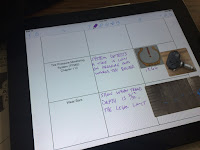Using Schoology Rubrics for Mastery Reporting
As teachers, we are always looking for ways to more clearly communicate with students. Specifically we’re often looking to communicate student progress to the students so that they have a clear picture of where they are going and how they are doing along the way. As mentioned in a previous post, setting learning objectives helps the students to see where they are ultimately headed. But how do we communicate to them their progress along the way? And how do we do so in a way that is clear for the students and time-effective for us?
A great tool that we have at our disposal is +Schoology. In Schoology, rubrics can be created on any “graded” assignment (Assignment, Discussion, Quiz/Test). With this rubric, students are provided with feedback on their work. Each teacher can choose whether these “graded” assignments are points in Infinite Campus or if they are for feedback alone. Check out this video for more information on creating rubrics in Schoology.
With Schoology, we can provide students with a wealth of information about their performance in class and on assignments. Using this kind of feedback helps the students see so much more than just a number on the top of the paper. Students can put words to their learning and progress which in turn helps them to be more critical and focused on their way to hitting their learning objectives.
But wait! There’s more!
In Schoology, there is the option of aligning the rubrics to learning objectives. These learning objectives can be either the provided objectives already pre-loaded in Schoology or can be created for specific courses. Once the rubrics have been tied to learning objectives, they can be used for Mastery Reporting. Check out this video to learn more about Mastery Reporting in Schoology.
With this tool, we are able to give the students a more global view of their progress within our courses and specifically as they pertain to each learning objective. How powerful would it be at the end of a semester to see all of their progress over the duration of the course? And how helpful would it be to see where they still need to focus their studies before a final exam?
Here are some ideas for using rubrics in your classroom. You can create a rubric for: (Source, Source)
- oral presentations
- participation so that students better understand both the quantity and quality of their participation
- complicated tasks like a research paper or large project
- a problem-solving task.
- assessing graphic organizers
- student blogs
Just yesterday, Schoology posted a blog called "5 Great Uses for Rubrics You'll Wish You'd Thought of First" with additional ideas for using rubrics in the classroom. Check it out!
Interested in learning more about using rubrics and mastery reporting in Schoology? Talk to one of us! Do you like individual attention to learn something new? Schedule an appointment with us! Do you already use rubrics and/or mastery reporting in Schoology in your class? Let us know and we can blog about you!
Co-authored by:
Ms. Dawn Bodden (Innovative Technology Facilitator) &
Ms. Ann Syversen Bullis (Division Technology Coach)


Comments
Post a Comment